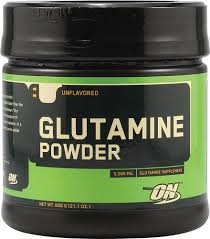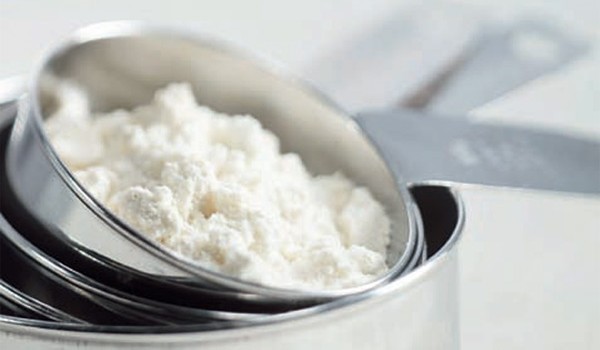By Anthoney J. Andersen – Steroidal.com
You’re in the middle of an intense workout. Sweat rains off your brow, the blood surges throughout your body – flooding your muscles as your veins are forced against the walls of your skin – looking like large cable lines thick enough for a tightrope walker to amble across.
You breathe hard, struggling to complete that last repetition, your muscles burning to the point that they feel like they’re going to shred like tissue paper. But you push through the pain and finish the set. Your muscles pulsate, giving your body that ‘pump’ look.
The next day your muscles throb like someone beat them repeatedly with a sledgehammer. This pain – which is considered the ‘good pain’ – is known as delayed-onset muscle soreness.
To decrease the longevity of onset soreness, it’s recommended that you consume a post workout supplement to help speed up the recovery of your muscles, while helping repair the muscle tissue that was ‘shredded’ during your exercise.
One of the most popular supplements that many bodybuilders turn to for muscle recovery is an amino acid known as L-glutamine.
NO PAIN, NO GAIN
Whether you’re an exercise novice or someone who partakes in regular physical exercise (three to four times a week), muscle soreness is par for the course. It should be viewed as a good thing – a reward for pushing your body to new heights.
 However, prolonged onset soreness can be a very vexing ailment to cope with, especially if you’re itching to get back into the gym.
However, prolonged onset soreness can be a very vexing ailment to cope with, especially if you’re itching to get back into the gym.
“Muscles go through quite a bit of physical stress when we exercise,” says Rick Sharp, professor of exercise physiology at Iowa State University in Ames. “Mild soreness is just a common outcome of any kind of physical activity, especially in the early stages of a program.”
Glutamine can be used to combat this soreness and reduce its presence in your muscles. Glutamine is an amino acid (a building block of proteins) found naturally in the body.
According to WebMD, glutamine is the most abundant free amino acid in the body. It’s produced in the muscles and is then distributed by the blood to the organs that need it. If the body uses more glutamine than the muscles can generate (times of stress or during intense physical training), then ‘muscle wasting’ can occur.
“Glutamine has become increasingly popular among athletes, as it is believed that it helps prevent infections following athletic events and speeds post-exercise recovery,” says registered dietician and American Diabetic Association spokesperson Jim White. “Doctors use glutamine most often when athletes are in a catabolic state of injury or after surgeries.”
BREAKDOWN, THEN BUILD UP
Amino acids are organic compounds that combine to form proteins. According to MedlinePlus.com, the basic structure of protein is a chain of amino acids. When proteins are broken down or digested, amino acids are left.
The human body uses amino acids to create proteins to help the body:
- Break down food.
- Repair muscle tissue.
- Help muscles grow.
During intense exercise, blood and muscle levels of glutamine are crumbled. To reverse this effect, nutrients must be delivered to the muscles and protein synthesis must be stimulated to build new muscle.
“If we supplement our body with glutamine before an intense training, we allow our body to preserve a high supply of glutamine in the muscles and stop them from breaking down,” says White.
During this critical period, glutamine becomes an ‘essential’ amino acid and must be obtained from dietary sources like beef, chicken, fish, eggs, beans, cottage cheese, raw spinach and cabbage.
Other forms of glutamine supplementation come in the form of L-glutamine, which can be purchased at vitamin shops and most drug stores in the form of powder, tablets, capsules and liquid forms.
DOSAGE
Doses of 500mg one to three times a day is considered safe for adults ages 18 and older, according to the University of Maryland Medical Center. Doses as high as 5,000-15,000mg daily (in divided doses) may be prescribed by health care providers for certain conditions.
OTHER USES
Glutamine is most widely associated with athletes, but it can also be used to help treat other critical health conditions.
HEALING WOUNDS
When the body is stressed (from injuries, infections, burns, or surgical procedures), it releases the hormone cortisol into the bloodstream. High levels of cortisol can cause your body to reduce its storage of glutamine.
According to Mayo Clinic, adding glutamine supplements to a person’s diet can help strengthen the immune system and reduce infections.
HIV/AIDS
When a person becomes diagnosed with HIV, they often experience a dramatic loss in weight – particularly a loss in muscle mass. Research has found that HIV and AIDS patients who take glutamine supplements – along with other vital nutrients like vitamins C and E, beta-carotene and selenium – may increase weight gain and help the intestines better absorb nutrients.
CONCLUSION
Glutamine is a vital nutrient that the body produces naturally, but increasing daily intake of the essential amino acid can help your body fight off certain critical health ailments.
However, like with most things, glutamine should be used with caution. Even though the body naturally produces it, combining glutamine with certain medications can cause adverse reactions and side effects.
So, it’s recommended that before you start supplementing your diet with glutamine (especially in high doses), you should consult your health care provider to make sure it’s a sound decision.
Stay strong and remain healthy.







